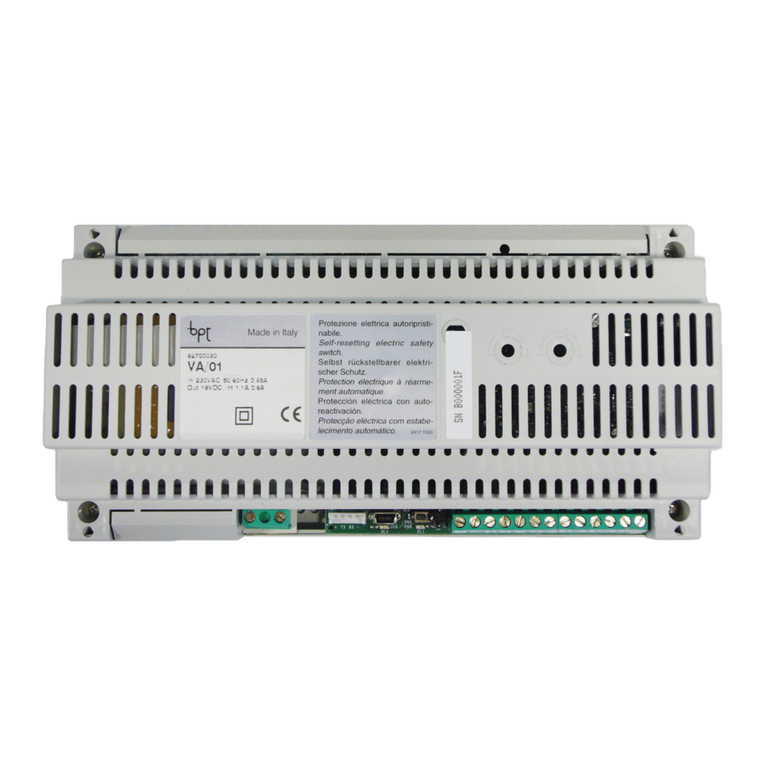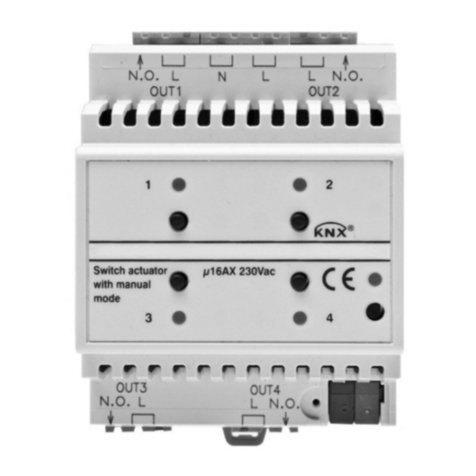4
for the reconguration of switch actuators in occupied
buildings so that the outputs do not switch in the event of
a download. The device does not know the status of the
channel at this point and therefore no status signal can
take place. The status is only available following a switching
action of the channel.
If the option “as for bus voltage recovery” is selected, the
setting for the parameter“Relay state after bus voltage
recovery” is adopted.
See: Behaviour on bus voltage recovery
Before triggering the relay, a check is made to determine
whether there is sucient energy to operate the relay. If
there is sucient energy, the relay immediately switches
to the parameterised state. Otherwise there is a delay until
sucient energy is available.
Important:
Relay states that are caused by functions with a
higher priority (higher priority function) take prece-
dence over the behaviour after ETS download.
Example: OR logic operation with parameterised
value of the logic object after bus voltage recovery =
1 takes priority and switches the output.
Status response
Each channel can deliver a status response, depending on
the parameter settings. An exception is made in the setting
“no change”: since the current status cannot be reliably
determined, no status telegram is sent.
Parameters
Channel X: General
Parameter Setting
Relay state after ETS download no change
opened
closed
as for bus voltage recovery
Important
No short switching times may be parameterised
under load (see the technical data for the switch
output)
Before triggering the relay, a check is made to determine
whether there is sucient energy to operate the relay. If
there is sucient energy, the relay immediately switches
to the parameterised state. Otherwise there is a delay until
sucient energy is available.
Important:
Relay states that are caused by functions with a high-
er priority (higher priority function) take precedence
over the behaviour after bus voltage recovery.
Example: OR logic operation with parameterised
value of the logic object after bus voltage recovery =
1 takes priority and switches the output.
Status response
Each channel can deliver a status response, depending on
the parameter settings. An exception is made in the setting
“no change”: since the current status cannot be reliably
determined, no status telegram is sent.
Parameters
Channel X: General
Parameter Setting
Relay state after bus voltage
recovery
no change
as for bus voltage failure
opened
closed
ash
If “ash” is selected, the ashing interval must be set.
Flashing interval
Parameter Setting
Flashing interval base 100 ms
1 s
1 min
1 hr
Flashing interval factor [5-255] 10
adjustable in single steps
- Behaviour after ETS download
After the ETS download, the relay can adopt a parameter-
ised state. The following options are available for selection.
In the settings “opened” or “closed”, the relay contact is
opened or closed. An inversion does not take place in the
“break contact” relay mode.
Staircase lighting functions: In the “make contact” mode,
the staircase lighting function starts with the setting
“closed”. This also happens in the “break contact” mode with
the setting “opened”.
In the setting “no change”, the relay remains in the state it
occupied prior to the download. Any manual operation that
occurs in the meantime (with 2-gang and 4-gang switch
actuators) is not overwritten. This function is conceived





























